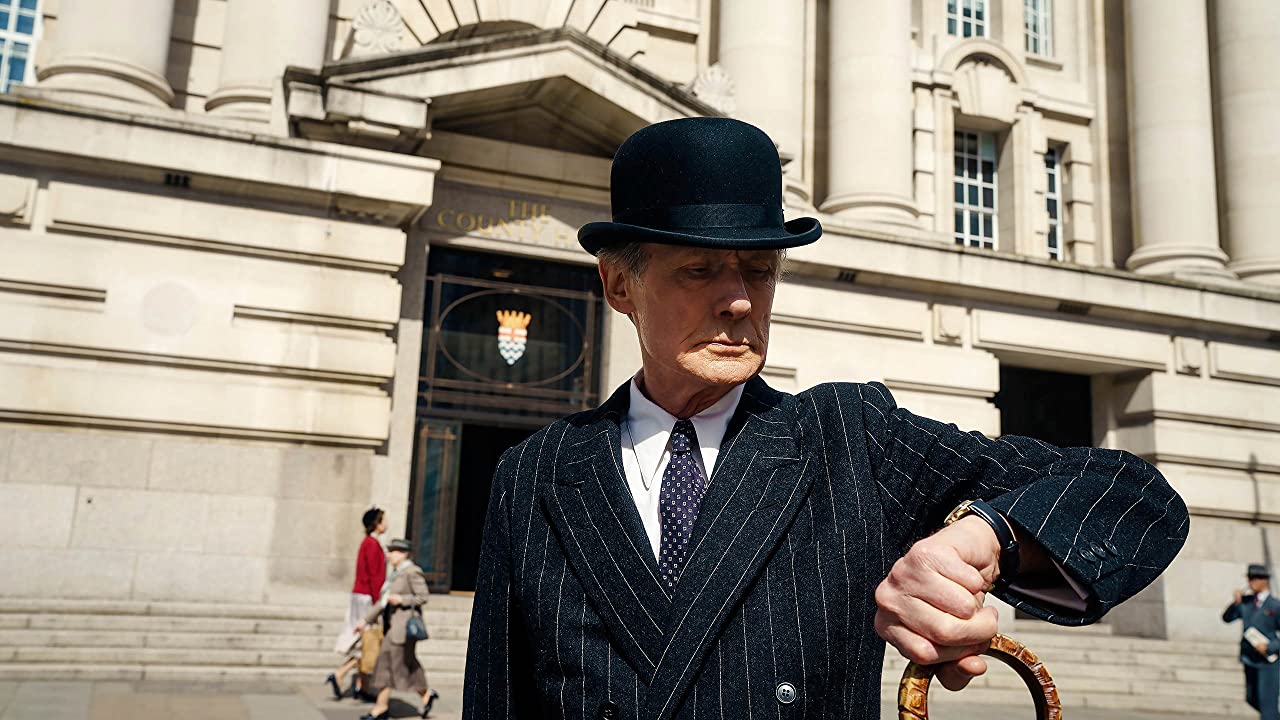Living: A Movie Review
A worthy remake of a Kurosawa classic, with a cinematic heart of gold and movie magic charm.

When you watch a movie in el cine, it can morph subtly before your eyes, surround your senses, capture your interest, and pull you in when you don’t expect it.
Living is not a great movie, but it offers a great movie-viewing experience.
For the first half hour I was thinking critically. I found myself wearing a critic’s hat, obscuring the view of the row behind me while mentally preparing a rant. It’s hokey, I thought. It’s not cinematic. It feels like television, the acting is wooden, the sets aren’t very good, the script is stuffy, the mood is dreary. It’s unknowingly conformist in its characterisations, across the board. And it feels a lot more pro-establishment than the source film, Kurosawa’s Ikiru (1952).
The original delivers a sharp critique of bureaucracy, the complacent machinery of state, and its unrealised potential to help the lower classes. This one carries the same message, but with a softer tone that is kinder to the state, bureaucracy, and those who run it. I am not a fan of bureaucracy, and sensing this softening of message dismayed me.
At some point, though, I settled into my seat, took off my critic’s hat, and placed it by my feet. The row behind me applauded, their view now clear (for those who have not seen one, critic’s hats are elaborate, oversized accoutrements that measure at least 20 centimetres in height). The movie started speaking on a level that felt simply good natured. My critical thoughts largely faded away. I felt like standing up and angrily stomping on that critic’s hat. I had come into proceedings with the wrong mindset altogether.
Lesson learnt. Don’t bring your critic’s hat into the movie theatre with you. Just watch the damn thing, and give it time to speak to you.
As the story progressed the image also seemed to take on more cinematic character, and stop feeling like a television production. Maybe I needed some time to adjust to the Academy ratio — an aspect ratio I have great fondness for, built my own projector screen in, and which plenty of great modern films have been shot in, but is arguably harder to pull off in the cinema.
More than the film’s technical merits, though, I simply started to feel the “heart of gold” in the movie theatre. The Roger Ebert, “cinema as empathy-generating machine” vibes. The kind of film that puts you in a good psychic realm in a way that is quite unique to cinema.
Director Oliver Hermanus is a South African filmmaker who has made notable movies in Afrikaans, and whose work was among the first South African movies to be selected for big film festivals and awards (Cannes, Venice, the BAFTAS, the Golden Globe Awards). Living is his first non-South African feature, and is the first to be nominated for Academy Awards.
Bill Nighy puts in a restrained and understated performance, and is perfectly cast in the role. He plays Williams, a man attempting to resuscitate the life force he lost at some point along the way as a well-mannered bureaucrat. He has spent his career as a civil servant of post-war Britain, lost in skyscrapers of paperwork. It’s a believable and memorable performance, showing a man towards the end of his life seeing his own despair, saying “fuck it,” and taking up arms against it to end things with a bit of joie de vivre and purpose.
Aimee Lou Wood is also very good in her role as an empathetic though perplexed “life force teacher” of sorts. She has moments of very believable, heartfelt reaction that imbue the film with much of the authentic emotional core that makes it work.
Williams receives a definitive terminal diagnosis from his doctor. Processing the news, he is quickly brought face-to-face with how callous and devoid of real love his remaining family, his son and daughter-in-law, are towards him. This propels him on a search to find meaning in his life elsewhere, in his last remaining months on Earth. In that search he finds purpose, and a good way to play the cards in his hands. His son and daughter-in-law react to his newfound free agency, which alarms them, by participating in some nasty neighbourhood gossip. He shrugs it off.
FIONA (shockingly loud)
There was a time - when what one did in London - stayed in London. But these days - half of this street works in London!
WILLIAMS (nods wisely)
That’s right, my dear. Half the street.
The story is based on Kurosawa’s Ikiru (1952) (which translates as “To Live”), and is a faithful adaptation of the plot, with a few tweaks — it has a slightly softened message and an overall more optimistic outlook.
The screenplay was written by Kazuo Ishiguro, a British writer born in Japan who describes himself as “a great admirer of Bob Dylan” — my kind of guy. He wrote the novel The Remains of the Day, adapted (by others) into the excellent 1993 movie starring Anthony Hopkins. Ishiguro has been nominated for Best Adapted Screenplay in this year’s Academy Awards, along with Nighy for Best Actor.
The world the story takes place in is culturally distinct from the original, despite being set in the same time period — switching out post-war Japan for post-war Britain. It feels like it wants to be a simple tale, gently tugging at heartstrings. It doesn’t have that big, cosmic poetry feel of Kurosawa; it’s more of a humble, nutritious and warming soup in British winter.
Living has some old-school movie magic charm. It calls back to a time when the story was king, above the technical merits or audio-visual experience of the picture. This has its pros and cons — there were endless moralistic and didactic movies from the black and white era, and sometimes the morals of these stories were “of their time” —, but when it works, it works well.
There aren’t many movies where you walk out of the cinema with a perceptibly more vivid sense of appreciation for life and its possibilities. With a few directors, you can reliably predict how you will feel leaving the theatre. Some movies, here and there, accomplish something similar in other ways. They sneak into your heart. For me this is one of them.
Living makes for an uplifting, spiritually energising movie-viewing experience I am grateful to have had, and is a viable remake of a classic story, that more than merits being adapted and retold. It’s one to go see.
James Lanternman writes movie reviews, essays, and moonlit thoughts. You can reach him at [email protected].
Previously… The Banshees of Inisherin: A Movie Review
